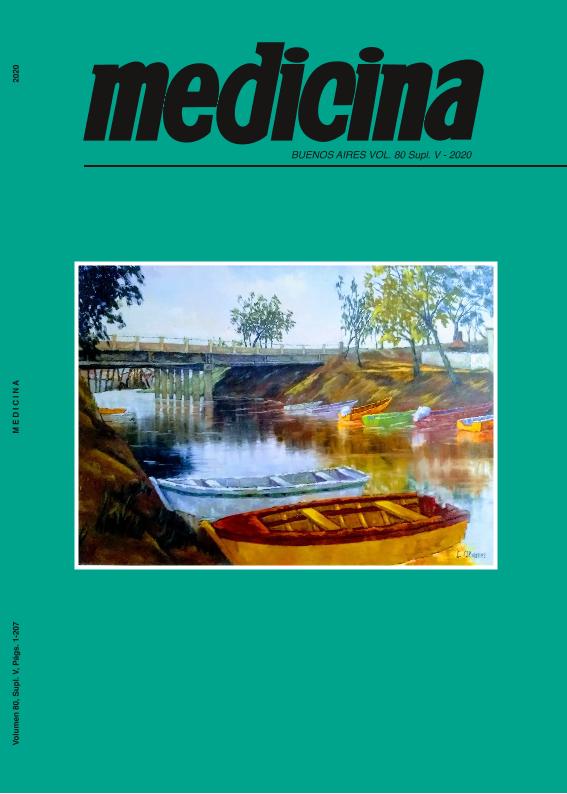Evento
Assessment of olfactory function in a clinical setting
Tipo del evento:
Reunión
Nombre del evento:
LXIII Reunión Anual de la Sociedad Argentina de Investigación Clínica; LXVIII Reunión Anual de la Sociedad Argentina de Inmunología y Reunión Anual de la Sociedad Argentina de Fisiología
Fecha del evento:
10/11/2020
Institución Organizadora:
Sociedad Argentina de Investigación Clínica;
Sociedad Argentina de Inmunología;
Sociedad Argentina De Fisiología;
Título de la revista:
Medicina (Buenos Aires)
Editorial:
Fundacion Revista Medicina
ISSN:
0025-7680
Idioma:
Inglés
Clasificación temática:
Resumen
Smell detects, recognizes and identifies environmental volatiles. The aim of this work was to evaluate smell performance of a group of 350-450 health workers as part of a screening task of acute loss of smell in COVID-19 pandemic context. Smell identification (SI) and self reported judgments of odor (SRO) and taste (SRT)were evaluated. A battery of 12 commercial food odorivectors (peach, pineapple, berries, banana, mint, cherry, vanilla, coffee, vinegar (V) and others) were smelledby means of filter paper strips impregnated in 20 % V/V aqueous solutions (V at 4,5 % V/V) in four sessions (S1 to S4). In each session, SI was evaluated with a set of four randomized odorivectors: (V) and other three essences to avoid sensory adaptation. A multiple choice paradigm (MCP) with five randomized odorivector options was always offered with the algorithm of google forms (GF).SI was quantified by number of hits: 0 (anosmic, A), 1-2 (hyposmic, H) and 3-4 (normosmic, N). SRO (How do you consider to detect or discriminate odors?) and SRT (How do you consider to detect or discriminate tastes?) were self categorized as poor (I), normal (II) or high sensitivity (III). Gender (G), age (AG), smoking status(SS) were reported and body mass index (BMI) was calculated. Collected data wereanalyzed by descriptive statistics, categorical chi-square and one-way analysis of variance tests (AOV).For SI judgments very few values for A and H categories were found (S1=0 and 7; S2=1 and 21; S3=4 and 60; S4=1 and 22). Instead N encompassed 403, 378, 390 and 315 assessors respectively. SRO (I=2,9%, II=89,9% III=7,2%) and SRT (I=1,6%, II=92% III=6,4%) revealed predominantly normal self reported chemosensory functions. SI status was independent of G, AG, SS or BMI levels (chi-square values with p> 0.05) and hits depend of odorivector (AOV p< 0.01), where V, mint, cherry and vanilla were the most identified odors. MCP, several food odors and GF give auseful tool to elucidate acute loss of smell.
Palabras clave:
SMELL IDENTIFICATION
,
TASTE
,
FOOD ODORS
Archivos asociados
Licencia
Identificadores
Colecciones
Eventos(INIGEM)
Eventos de INSTITUTO DE INMUNOLOGIA, GENETICA Y METABOLISMO
Eventos de INSTITUTO DE INMUNOLOGIA, GENETICA Y METABOLISMO
Citación
Assessment of olfactory function in a clinical setting; LXIII Reunión Anual de la Sociedad Argentina de Investigación Clínica; LXVIII Reunión Anual de la Sociedad Argentina de Inmunología y Reunión Anual de la Sociedad Argentina de Fisiología; Mar del Plata; Argentina; 2020; 1-5
Compartir




